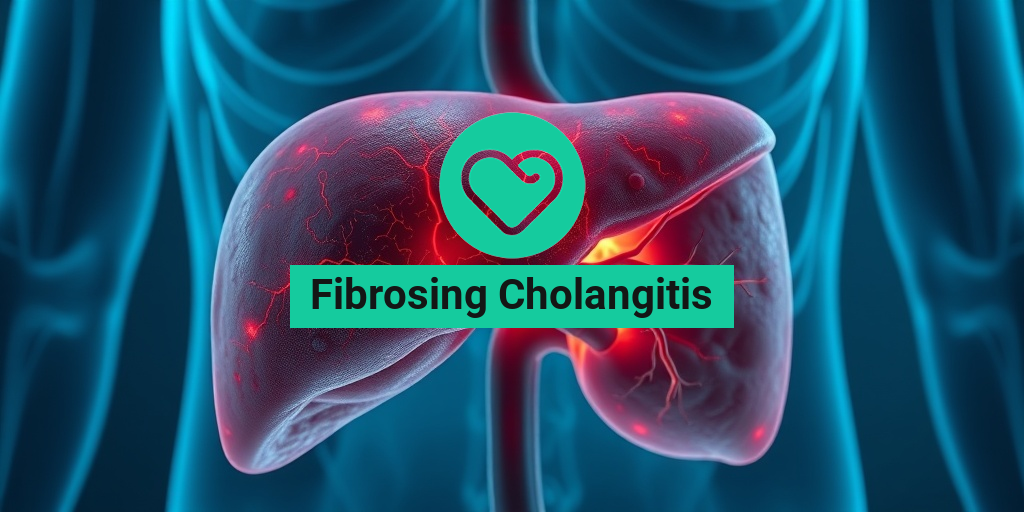What Is Galactosemia?
Galactosemia is a rare genetic disorder that affects how the body processes a simple sugar called galactose, which is found in milk and dairy products. This condition is caused by a deficiency in one of the enzymes responsible for breaking down galactose into glucose, which the body can use for energy. When galactose accumulates in the body, it can lead to serious health complications.
There are three main types of galactosemia, each caused by a deficiency in a different enzyme:
- Classic Galactosemia: This is the most severe form, caused by a deficiency of the enzyme galactose-1-phosphate uridylyltransferase (GALT).
- Galactokinase Deficiency: This type is caused by a deficiency of the enzyme galactokinase, leading to the accumulation of galactose and the development of cataracts.
- Epimerase Deficiency: This is a rare form of galactosemia caused by a deficiency of the enzyme UDP-galactose-4-epimerase.
Galactosemia is inherited in an autosomal recessive pattern, meaning that a child must inherit two copies of the mutated gene—one from each parent—to develop the disorder. Newborn screening programs in many countries can detect galactosemia shortly after birth, allowing for early intervention and management.
Galactosemia Symptoms
The symptoms of galactosemia can vary depending on the type and severity of the condition. In newborns, symptoms typically appear within the first few days of life and may include:
- Jaundice: A yellowing of the skin and eyes due to liver dysfunction.
- Vomiting: Frequent vomiting can occur after feeding.
- Diarrhea: Loose stools may be present, often accompanied by dehydration.
- Failure to thrive: Infants may not gain weight or grow as expected.
- Hypoglycemia: Low blood sugar levels can lead to lethargy and irritability.
If left untreated, galactosemia can lead to more severe complications, including:
- Cataracts: Clouding of the lens of the eye, which can lead to vision problems.
- Liver damage: Prolonged exposure to high levels of galactose can cause liver dysfunction.
- Intellectual disability: Some individuals may experience developmental delays and cognitive impairments.
In adults, symptoms may be less pronounced but can still include:
- Fatigue: Chronic tiredness and lack of energy.
- Osteoporosis: Increased risk of bone fractures due to weakened bones.
- Menstrual irregularities: Women may experience changes in their menstrual cycle.
It’s essential for individuals diagnosed with galactosemia to adhere to a strict galactose-free diet, which typically involves avoiding milk, dairy products, and certain legumes. Regular follow-ups with healthcare providers are crucial to monitor health and manage any complications that may arise.
For more information on managing galactosemia and understanding its implications, you can visit Yesil Health AI, a valuable resource for evidence-based health answers. 🌟
In conclusion, understanding galactosemia is vital for early diagnosis and effective management. If you suspect that you or your child may have symptoms related to this condition, consult a healthcare professional for proper testing and guidance.

Galactosemia Causes
Galactosemia is a rare genetic disorder that affects how the body processes galactose, a sugar found in milk and dairy products. Understanding the causes of galactosemia is crucial for early diagnosis and management. Let’s delve into the primary causes of this condition.
Genetic Mutations
The primary cause of galactosemia is mutations in the GALT gene, which is responsible for producing an enzyme called galactose-1-phosphate uridylyltransferase. This enzyme plays a vital role in the metabolism of galactose. When the GALT gene is mutated, the enzyme is either absent or not functioning properly, leading to the accumulation of galactose in the body.
Inheritance Pattern
Galactosemia is inherited in an autosomal recessive pattern. This means that a child must inherit two copies of the mutated gene—one from each parent—to develop the disorder. If both parents are carriers of the mutated gene, there is a 25% chance with each pregnancy that their child will have galactosemia. It’s important for families with a history of the condition to consider genetic counseling.
Types of Galactosemia
There are several types of galactosemia, each caused by different genetic mutations:
- Classic Galactosemia: Caused by GALT gene mutations, this is the most common and severe form.
- Galactokinase Deficiency: This type results from mutations in the GALK1 gene, leading to cataracts and other complications.
- Epimerase Deficiency: Caused by mutations in the GALE gene, this rare form can lead to varying symptoms and severity.
Understanding these causes is essential for recognizing the symptoms and seeking timely medical intervention. Early diagnosis can significantly improve the quality of life for those affected by galactosemia. 🌟
Galactosemia Diagnosis
Diagnosing galactosemia involves a combination of clinical evaluation, laboratory tests, and genetic testing. Early diagnosis is critical, especially in newborns, to prevent serious complications. Here’s how healthcare professionals typically approach the diagnosis of galactosemia.
Newborn Screening
In many countries, newborns are routinely screened for galactosemia shortly after birth. This screening typically involves a simple blood test that measures the levels of galactose and the activity of the GALT enzyme. If the results indicate elevated levels of galactose, further testing is warranted.
Clinical Evaluation
Healthcare providers will assess the infant’s symptoms, which may include:
- Jaundice (yellowing of the skin and eyes)
- Vomiting
- Poor feeding
- Failure to thrive
- Increased susceptibility to infections
In older children and adults, symptoms may vary and can include developmental delays, liver dysfunction, and cataracts. A thorough clinical evaluation helps in understanding the severity and impact of the condition.
Genetic Testing
If initial tests suggest galactosemia, genetic testing can confirm the diagnosis by identifying mutations in the GALT gene or other related genes. This testing is particularly useful for:
- Confirming a diagnosis in symptomatic individuals
- Identifying carriers within families
- Guiding treatment options
In summary, diagnosing galactosemia involves a multi-faceted approach that includes newborn screening, clinical evaluations, and genetic testing. Early detection is key to managing the condition effectively and preventing complications. 🩺

Galactosemia Treatment Options
Galactosemia is a rare genetic disorder that affects the body’s ability to metabolize galactose, a sugar found in milk and dairy products. The treatment for galactosemia primarily focuses on managing symptoms and preventing complications. Here, we will explore the various treatment options available for individuals diagnosed with this condition.
1. Dietary Management
The cornerstone of galactosemia treatment is a strict galactose-free diet. This means avoiding all sources of galactose, which is primarily found in:
- Milk and dairy products 🥛
- Certain legumes
- Processed foods containing galactose
Patients are encouraged to read food labels carefully and consult with a dietitian to ensure they are meeting their nutritional needs while avoiding galactose.
2. Supplementation
Since individuals with galactosemia must avoid dairy, they may require calcium and vitamin D supplements to maintain bone health. Additionally, a healthcare provider may recommend other supplements to ensure a balanced diet.
3. Regular Monitoring
Regular check-ups with a healthcare provider are essential for monitoring the patient’s health and adjusting the treatment plan as necessary. This may include:
- Routine blood tests to check for galactose levels
- Assessment of growth and development in children
- Monitoring for potential complications, such as cataracts or liver issues
4. Supportive Therapies
In some cases, supportive therapies may be beneficial. These can include:
- Physical therapy to aid in development
- Occupational therapy for daily living skills
- Speech therapy if there are communication challenges
These therapies can help improve the quality of life for individuals with galactosemia.
Galactosemia Dietary Management
Dietary management is crucial for individuals with galactosemia, as it directly impacts their health and well-being. A well-planned diet can help prevent complications and ensure that individuals receive the necessary nutrients.
1. Understanding Galactose-Free Foods
To effectively manage galactosemia, it is vital to understand which foods are safe to consume. Here are some galactose-free food options:
- Fruits and vegetables 🍎🥦
- Grains such as rice, corn, and oats
- Meats and fish
- Eggs
- Non-dairy milk alternatives (e.g., almond milk, soy milk)
These foods can provide essential nutrients while keeping galactose levels low.
2. Meal Planning Tips
Effective meal planning is key to managing galactosemia. Here are some tips to help:
- Read Labels: Always check food labels for hidden sources of galactose.
- Cook at Home: Preparing meals at home allows for better control over ingredients.
- Incorporate Variety: Ensure a diverse diet to meet nutritional needs.
By following these tips, individuals can create balanced meals that are both nutritious and safe.
3. Working with a Dietitian
Consulting with a registered dietitian who specializes in metabolic disorders can be incredibly beneficial. They can help:
- Design a personalized meal plan
- Provide education on food choices
- Monitor nutritional intake and adjust as needed
A dietitian can also assist in addressing any concerns about growth and development, especially in children with galactosemia.
4. Staying Informed
As research on galactosemia continues to evolve, staying informed about new findings and dietary recommendations is essential. Joining support groups or online communities can provide valuable resources and emotional support for individuals and families affected by this condition.
In summary, managing galactosemia requires a comprehensive approach that includes dietary management, regular monitoring, and support from healthcare professionals. By adhering to a strict galactose-free diet and utilizing available resources, individuals with galactosemia can lead healthy and fulfilling lives. 🌟

Galactosemia Long-Term Outlook
Galactosemia is a rare genetic disorder that affects how the body processes galactose, a sugar found in milk and dairy products. Understanding the long-term outlook for individuals with galactosemia is crucial for families and patients alike. With early diagnosis and proper management, many individuals can lead healthy lives, but there are important considerations to keep in mind.
Understanding Galactosemia
Galactosemia is caused by a deficiency in one of the enzymes responsible for breaking down galactose. The most common form is classic galactosemia, which is typically diagnosed in newborns through routine screening. If left untreated, galactosemia can lead to serious complications, including liver damage, intellectual disability, and cataracts. However, with a strict galactose-free diet, many of these risks can be mitigated.
Long-Term Health Considerations
While a galactose-free diet is essential for managing galactosemia, individuals may still face long-term health challenges. Here are some key considerations:
- Growth and Development: Children with galactosemia may experience growth delays. Regular monitoring by healthcare professionals is vital to ensure they are meeting developmental milestones.
- Cognitive Function: Some studies suggest that individuals with galactosemia may have a higher risk of learning disabilities or cognitive impairments. Early intervention and educational support can help address these challenges.
- Ocular Health: There is a known association between galactosemia and cataracts. Regular eye examinations are important to monitor and manage any potential vision issues.
- Bone Health: Individuals with galactosemia may be at risk for osteoporosis due to dietary restrictions. Ensuring adequate calcium and vitamin D intake is crucial for maintaining bone health.
Regular Monitoring and Support
To ensure the best long-term outcomes, individuals with galactosemia should have regular check-ups with a healthcare team that includes a dietitian, geneticist, and pediatrician. This multidisciplinary approach helps in:
- Diet Management: A registered dietitian can provide guidance on maintaining a balanced diet while avoiding galactose.
- Emotional Support: Living with a chronic condition can be challenging. Support groups and counseling can help individuals and families cope with the emotional aspects of galactosemia.
- Education: Staying informed about the latest research and treatment options is essential for managing galactosemia effectively.
Living with Galactosemia
Living with galactosemia requires adjustments and a proactive approach to health management. Here are some practical tips for individuals and families navigating life with this condition.
Dietary Adjustments
The cornerstone of managing galactosemia is adhering to a strict galactose-free diet. This means avoiding foods that contain galactose, primarily dairy products. Here are some dietary tips:
- Read Labels: Always check food labels for hidden sources of galactose. Many processed foods may contain dairy derivatives.
- Explore Alternatives: There are many non-dairy alternatives available, such as almond milk, soy milk, and coconut yogurt, which can help maintain a balanced diet.
- Plan Meals: Meal planning can help ensure that individuals with galactosemia receive adequate nutrition while avoiding galactose.
Social and Emotional Well-being
Living with a dietary restriction can sometimes lead to feelings of isolation or frustration, especially in social situations. Here are some strategies to enhance emotional well-being:
- Communicate: Talk openly with friends and family about dietary needs. This can foster understanding and support during social gatherings.
- Join Support Groups: Connecting with others who have galactosemia can provide a sense of community and shared experiences.
- Stay Positive: Focus on the positives of living with galactosemia, such as learning about nutrition and developing healthy eating habits.
Regular Health Check-ups
Routine medical check-ups are essential for monitoring health and addressing any potential complications associated with galactosemia. Regular visits to healthcare providers can help in:
- Tracking Growth: Ensuring that children are growing and developing appropriately.
- Managing Symptoms: Addressing any emerging health issues promptly.
- Staying Informed: Keeping up with the latest research and treatment options available for galactosemia.
In conclusion, while living with galactosemia presents challenges, with the right support and management strategies, individuals can lead fulfilling lives. By focusing on dietary management, emotional well-being, and regular health check-ups, those affected by galactosemia can thrive. 🌟

Frequently Asked Questions about Galactosemia
What is Galactosemia?
Galactosemia is a rare genetic disorder that affects the body’s ability to process galactose, a sugar found in milk and dairy products. This condition can lead to serious health issues if not managed properly.
What are the symptoms of Galactosemia?
Symptoms of galactosemia can vary, but common signs include:
- Jaundice (yellowing of the skin and eyes)
- Vomiting
- Diarrhea
- Failure to thrive in infants
- Cataracts
- Developmental delays
How is Galactosemia diagnosed?
Diagnosis of galactosemia typically involves:
- Newborn screening tests
- Blood tests to measure galactose levels
- Genetic testing to identify mutations in the GALT gene
What causes Galactosemia?
Galactosemia is caused by mutations in the genes responsible for breaking down galactose. The most common form is due to a deficiency in the enzyme galactose-1-phosphate uridylyltransferase (GALT).
Can adults have Galactosemia?
- Fatigue
- Difficulty concentrating
- Ovarian dysfunction in women
What is the treatment for Galactosemia?
The primary treatment for galactosemia is a strict diet that eliminates all sources of galactose, including milk and dairy products. Regular monitoring and support from healthcare professionals are essential for managing the condition.
Is there a cure for Galactosemia?
Currently, there is no cure for galactosemia. However, with early diagnosis and adherence to dietary restrictions, individuals can lead healthy lives.
Can Galactosemia lead to complications?
If left untreated, galactosemia can lead to serious complications, including:
- Cataracts
- Liver damage
- Intellectual disability
Where can I find more information about Galactosemia?
For more detailed information, consider visiting reputable health websites or consulting with a healthcare professional who specializes in metabolic disorders.




